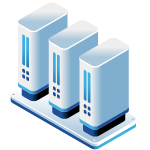It’s a frustrating moment for any OpenStack admin: you try to attach a Cinder volume, and it just…fails. This can bring applications and data access to a halt. If you’re facing this problem, don’t worry. It’s usually caused by a handful of common, not-too-hard-to-fix issues.
Here’s a quick look at the usual suspects and how to sort them out:
- Wrong Volume State: A volume can get stuck in a state like “in-use” or “attaching” in the database, even when it’s not actually attached to anything. This confusion blocks any new attachment attempts. You can check the volume’s status with
openstack volume showand, if necessary, carefully reset it withcinder reset-state --state available <volume-id>. - Backend Configuration Errors: A simple typo or incorrect path in your Cinder configuration can prevent volumes from attaching. This often involves backend-specific settings like
volumes_diror misconfigured volume types that don’t match your storage. - Network Problems: Sometimes, the issue isn’t with Cinder at all, but the network. Things like VLAN misconfigurations, VXLAN tunnel problems, or a firewall rule that’s a bit too strict can block communication between your compute nodes and storage backend.
First Steps to Fixing a Failed Attachment
When a volume fails to attach, a methodical approach will help you find the root cause quickly.
- Check the Volume’s Status: First, see what OpenStack thinks is happening. Run
openstack volume show <Volume_UUID>to check its status. This will tell you if it’s “available,” “in-use,” or stuck in an error state. - Read the Logs: Your best friend for troubleshooting is the log files. Check the
cinder-apiandcinder-volumelogs (usually in/var/log/cinder/) for any obvious error messages. Also, check thenova-computelog on the compute host where the instance is running. - Reset the Volume State (With Caution!): If a volume is stuck in a transitional state like “attaching” or incorrectly listed as “in-use,” you may need to reset it manually. Use
cinder reset-state --state available <Volume_UUID>. Be careful with this command; it only changes the database record and doesn’t fix any underlying issues. - Verify Your Configuration: Double-check your
cinder.conffile for any typos or misconfigurations in the backend stanza. Ensure the settings match what your storage array expects. - Restart Cinder Services: After making any configuration changes, don’t forget to restart the Cinder services (
cinder-volume,cinder-scheduler, etc.) to apply them.
Diving Deeper: The Common Causes of Attachment Failures
Let’s break down the three main problem areas in more detail.
1. Incorrect Volume States
An inconsistency between the Cinder database and the actual state of a volume is a classic cause of attachment failures.
- Stuck “in-use” or “attaching”: This is the most common problem. An earlier operation may have failed, leaving the volume’s status in the database as “in-use” or “attaching.” OpenStack sees this and, to protect your data, prevents any new attachments.
- Reserved Volumes: In some cases, a volume can get stuck in a “reserved” state, which can also block operations.
OpenStack has strict rules for when a volume can be attached. According to the documentation, a volume’s status must be “available” (or in some error states like error_restoring) and not be in the middle of another operation like a migration. If these conditions aren’t met, the attachment will fail. This is a built-in safety feature to prevent data corruption.
2. Backend Configuration Issues
Your storage backend is where the actual data lives, and if Cinder can’t talk to it correctly, nothing works.
- Configuration File Errors: Simple mistakes in
/etc/cinder/cinder.confare a frequent source of trouble. Check for incorrect IP addresses, user credentials, or paths likevolumes_dir. For iSCSI backends, a misconfiguredtgtdaemon or a missing include file intargets.confcan prevent Cinder from finding target information. - Mismatched Volume Types: If you use multiple backends, you need to use volume types to direct Cinder to the right place. If a volume type doesn’t correctly map to an available backend, the Cinder scheduler won’t know where to place the volume, and attachment will fail.
- Driver-Specific Issues: Each storage backend driver has its own unique configuration requirements. For example, a deployment might fail with a
TypeErrorif a specific driver expects a value that it’s not receiving.
3. Networking and Connectivity Problems
For a volume to attach, the compute node needs a clear network path to the storage backend.
- Physical and Virtual Network Issues: Problems can start at the physical layer with a bad cable or a misconfigured switch port (e.g., wrong VLAN tagging). In virtualized networks, things get more complex. With VXLAN, for instance, if the tunnel endpoints (VTEPs) on two compute nodes can’t communicate, volumes can’t be attached between them.
- Routing and Firewalls: If the compute and storage nodes are on different subnets, a routing problem can prevent them from connecting. More commonly, a firewall rule on a host or a security group rule in Neutron might be blocking the necessary ports for iSCSI or NFS traffic.
How to Prevent Future Attachment Failures
Fixing problems is good, but preventing them is better. A little proactive work can save you from dealing with issues.
Monitoring and Health Checks
You can’t fix what you can’t see. Setting up good monitoring is always helpful.
- Service Heartbeats: Most Cinder services send a heartbeat to the database to show they’re alive. Ensure your heartbeat intervals are consistent across all nodes to avoid services being incorrectly marked as down. You can check the status of your services anytime with
cinder service-list. - Use Monitoring Tools: Tools like Grafana or Prometheus can be configured to watch over your Cinder environment. You can create dashboards to track volume statuses, API health, and backend capacity, so you can spot trends before they become failures.
- Automated Cleanup: Cinder has mechanisms to clean up failed operations or resources stuck in a transitional state. Make sure these are enabled and configured correctly to handle interruptions gracefully.
Configuration Best Practices
A solid configuration is the foundation of a reliable storage service.
- Use Volume Types Thoughtfully: Define clear volume types that map to your different storage backends. Use extra specs to define capabilities like “high-performance” or “bulk-storage” so that volumes are always placed on the appropriate hardware.
- Manage Driver Versions: Before upgrading OpenStack or your storage backend, always check the driver compatibility. Pinning a stable driver version can prevent surprises.
- Keep Your Network Tidy: Regularly audit your network configurations, including VLANs, routing tables, and firewall rules, to ensure there are no black holes where traffic can get lost.
- Don’t Edit the Database Directly (Unless You Absolutely Have To): As a last resort, you can manually fix inconsistencies in the database. But as Remy van Elst of Raymii.org warns, “If you have these inconsistencies you have bigger problems you need to fix instead of manually setting state.” Always try to use the
novaandcindercommand-line tools first. Thenova-manage volume_attachment refreshcommand, for example, can often fix sync issues between Nova and Cinder.
By understanding these common causes and adopting a proactive approach to monitoring and configuration, you can build a more stable and dependable OpenStack storage environment.
Frequently Asked Questions (FAQs)
Q: What should I do if my Cinder volume is stuck in the ‘attaching’ state?
First, check the cinder-volume and nova-compute logs for errors. Often, a conflict or communication issue will be reported there. If it was recently detached, try attaching it again but specify a different device name (e.g., /dev/vde instead of /dev/vdd). If it’s still stuck, you may need to use cinder reset-state --state available <Volume_UUID> to force it back to an “available” state, then try the attachment again.
Q: How can I troubleshoot backend configuration issues?
Start by reviewing your /etc/cinder/cinder.conf file, focusing on the configuration block for your specific storage backend. Check every parameter: IP address, username, password, and any driver-specific options like volume_backend_name. Use cinder service-list to ensure the cinder-volume service for that backend is up and running. An incorrect setting will often cause the service to fail or log repeated errors in /var/log/cinder/volume.log.
Q: What are common networking issues that prevent volumes from attaching?
The most common network problems are firewall rules blocking storage traffic (like iSCSI port 3260) or network segmentation issues. Make sure your compute node can ping your storage backend’s data IP. If you use VLANs, ensure the compute node’s network interface and the switch port are tagged for the correct storage VLAN. In Neutron, check that your security group rules allow the necessary traffic between the instance and the storage backend.
Schedule a Consultation
Get a deeper assessment and discuss your unique requirements.
Read More on the OpenMetal Blog


































